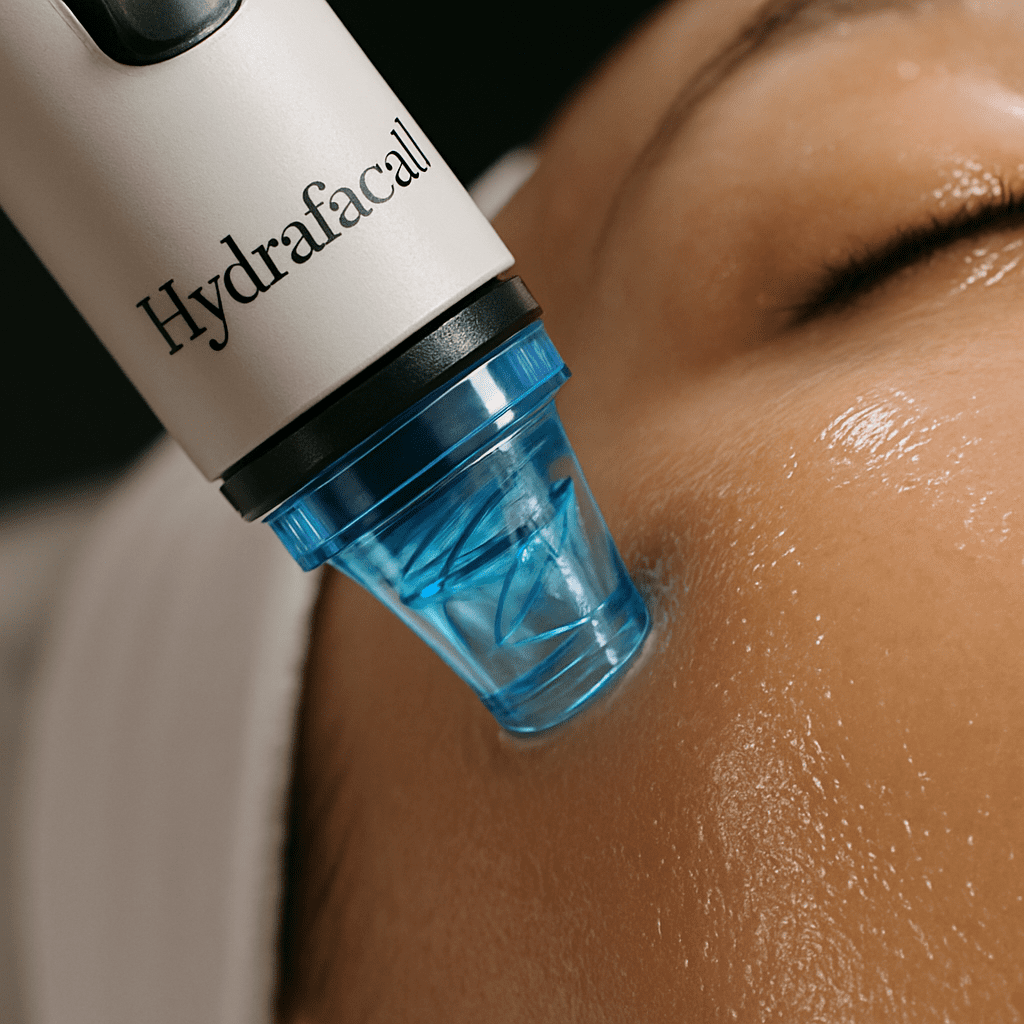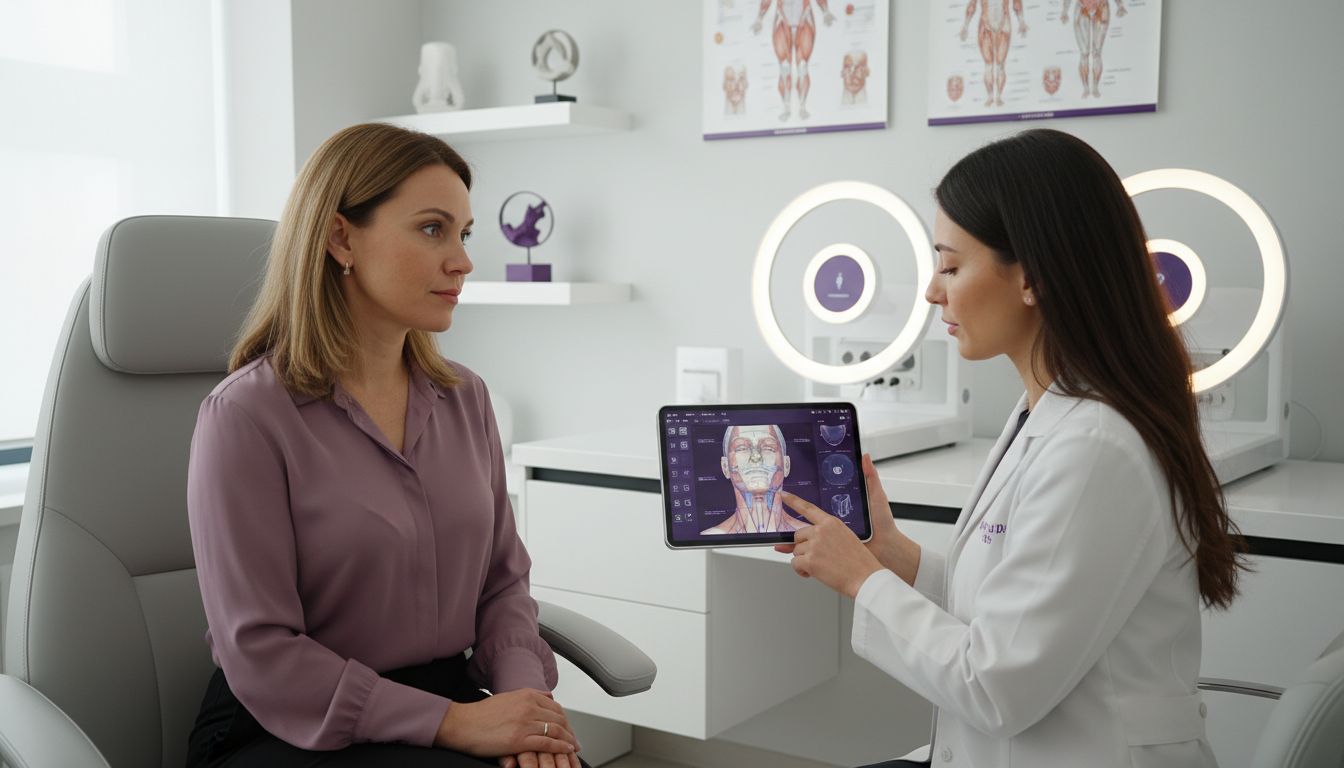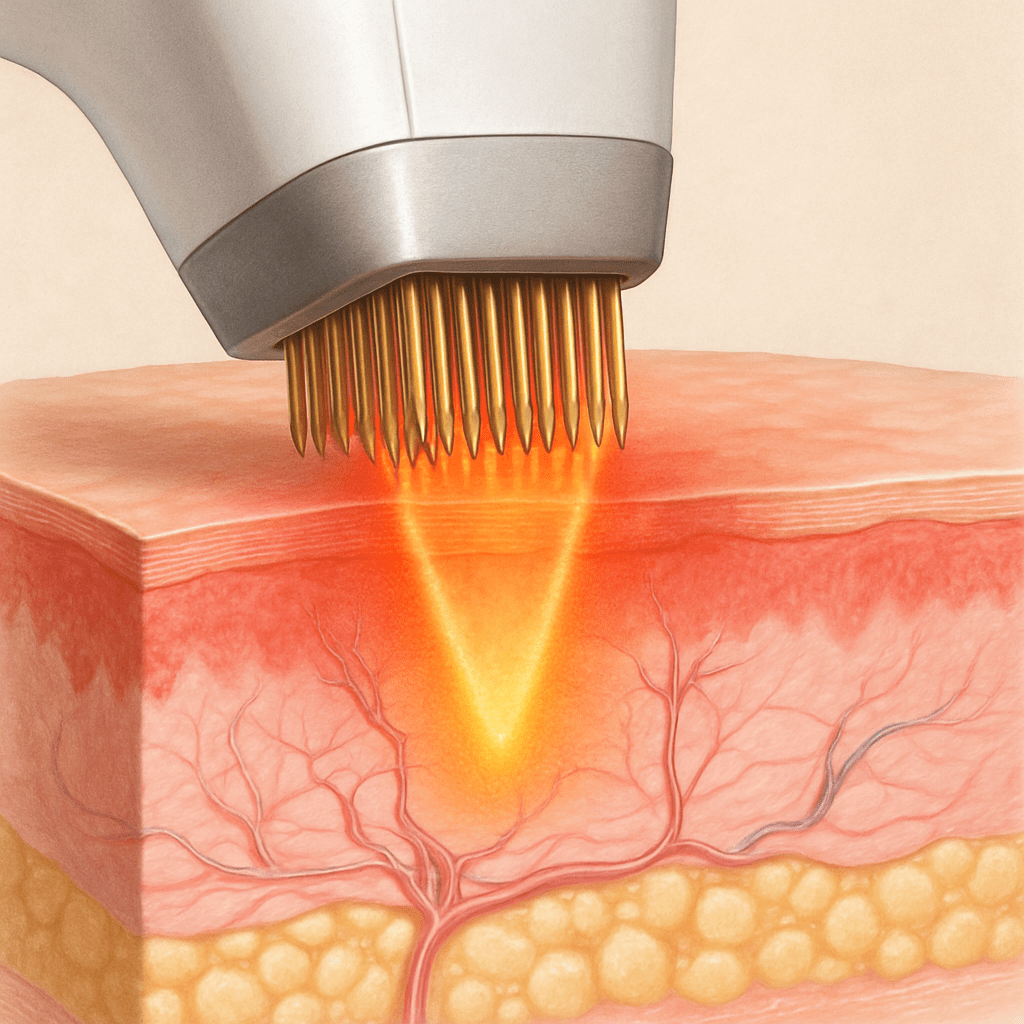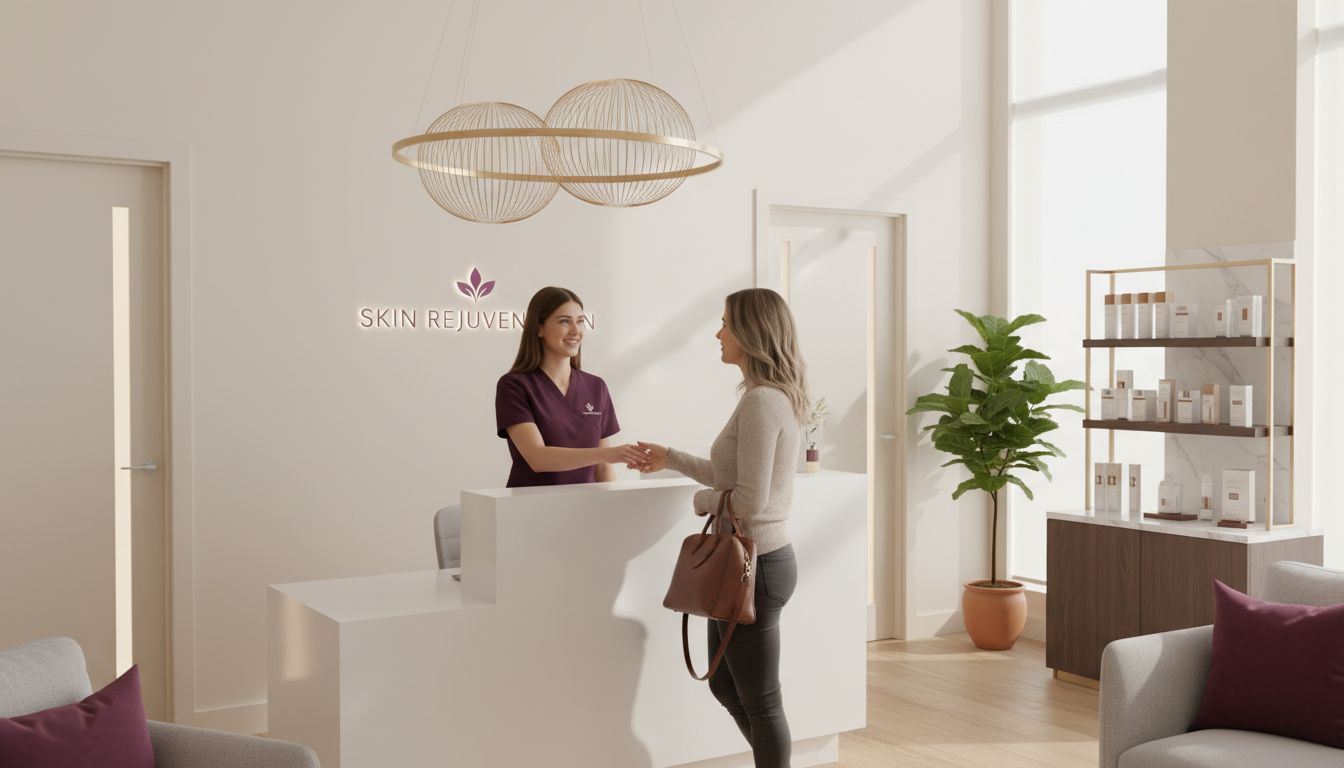Ever stared at your reflection and wondered if there’s a quick, painless way to smooth those fine lines without the hassle of downtime?
Maybe you’ve heard the buzz about Hydrafacial and microdermabrasion, and now you’re stuck in the “hydrafacial vs microdermabrasion” debate, feeling a bit overwhelmed.
Let’s be honest: you want results that look natural, feel gentle, and fit into your busy schedule.
At Simcoe Cosmetic Clinic we’ve seen countless folks—women in their 30s, men in their 50s—who are searching for that fresh, youthful glow without a surgical scar.
So, what’s the real difference? Think of a Hydrafacial as a high‑tech spa day that vacuums, infuses, and extracts in one seamless flow, while microdermabrasion is more like a gentle sandpaper that exfoliates the outer skin layer.
Do you crave the instant radiance of a Hydrafacial, or are you comfortable with the gradual resurfacing that microdermabrasion offers?
Here’s a quick snapshot: Hydrafacial delivers hydration, antioxidant serums, and a polished finish in about 30 minutes; microdermabrasion relies on tiny crystals to slough off dead cells, often requiring multiple sessions for optimal glow.
But remember, every skin type is unique—what works wonders for one person might feel too intense for another.
If you’re still on the fence, imagine the feeling of a cool mist gliding over your skin, followed by a subtle, dewy shine—that’s the Hydrafacial experience.
On the flip side, picture a light, almost ticklish sensation as fine crystals sweep across your cheeks, leaving a smoother texture beneath—that’s microdermabrasion in action.
Both treatments can tackle fine lines, uneven tone, and clogged pores, yet the route they take differs, and so does the after‑care.
Are you ready to choose a path that matches your comfort level and skincare goals?
We’ll walk through the specifics in the next sections, but first, a quick reminder: taking care of your skin is just one piece of a healthy lifestyle.
For example, safeguarding your future with solid financial planning, like exploring the best life insurance options for seniors, can give you peace of mind while you focus on looking and feeling great.
Stick with us, and we’ll help you decide whether a Hydrafacial or microdermabrasion fits your routine, budget, and skin goals.
TL;DR
In short, a Hydrafacial gives you instant dewy glow with gentle extraction, while microdermabrasion uses fine crystals to smooth texture over a few sessions; choose based on your skin’s sensitivity and the results you crave.
And remember, great skin is just one piece of self‑care—pair it with solid financial planning, like checking out the best life insurance for seniors over 60, to keep both your complexion and future looking radiant.
What Is a Hydrafacial? How It Works
Ever wondered why your skin feels instantly refreshed after a Hydrafacial, yet you don’t see any red bumps the next day? That’s because the treatment blends spa‑level pampering with science‑backed technology.
At Simcoe Cosmetic Clinic we like to think of it as a four‑step dance: cleanse, peel, extract, and then flood the skin with nourishing serums. Each step builds on the last, so you end up with a glow that feels more like a natural radiance than a temporary filter.
First up is the Vortex‑Fusion Delivery System. Imagine a gentle vacuum that whisks away dead cells, oil, and debris while a spiral tip creates a tiny vortex, pulling impurities out without any harsh scraping.
That spiral design isn’t just a gimmick – it actually distributes serums evenly across the skin, ensuring every pore gets its share of hydration. The suction is strong enough to clear congestion, yet soft enough that you won’t hear any “yanking” noises.
Step 1 is a deep cleanse and exfoliation. A specially formulated cleanser works hand‑in‑hand with the vacuum to sweep away surface grime, leaving a clean canvas for the next phases.
Step 2 introduces a mild acid peel, usually a blend of salicylic and glycolic acids. It dissolves deeper‑seated oil and smooths texture, but you won’t feel the sting you get from traditional chemical peels.
Step 3 is the painless extraction. Thanks to that same gentle suction, impurities pop out of pores without the pinching you might remember from old‑school facials.
Finally, step 4 drenches your skin in customized serums packed with antioxidants, peptides, and hyaluronic acid. Think of it as a nutrient‑rich smoothie for your face, locking in moisture and fortifying the barrier.
Because the serums are fully customizable, we can target anything from stubborn acne to fine lines or uneven tone. One client with sensitive skin swore by the soothing effect of the peptide‑rich booster, while another with oily skin loved how the treatment tamed shine without stripping moisture.
That versatility is a big reason why Hydrafacial feels gentler than microdermabrasion. Where micro‑abrasion relies on gritty crystals to sand away dead skin – often leaving a temporary redness – Hydrafacial uses suction and serums, so there’s virtually no downtime.
So, does that mean you should ditch microdermabrasion altogether? Not necessarily. If you love the idea of a more aggressive resurfacing and have resilient skin, it can still have a place in your routine. But for most folks seeking a quick, comfortable lift, Hydrafacial wins on comfort and results.
Quick tip: ask your practitioner which boosters will best match your skin goals. A hyaluronic‑acid‑heavy formula is perfect for dry, mature skin, while a peptide‑plus‑antioxidant mix can help firm and brighten.
And while you’re thinking about self‑care, remember that great skin is just one piece of a healthy lifestyle. Pair your glow‑up with smart financial habits, like checking out the best life insurance for seniors over 60, to keep both your complexion and future looking radiant.
Ready to experience that instant dewy finish? Book a consultation at Simcoe Cosmetic Clinic, and let us walk you through the four‑step process tailored just for you.
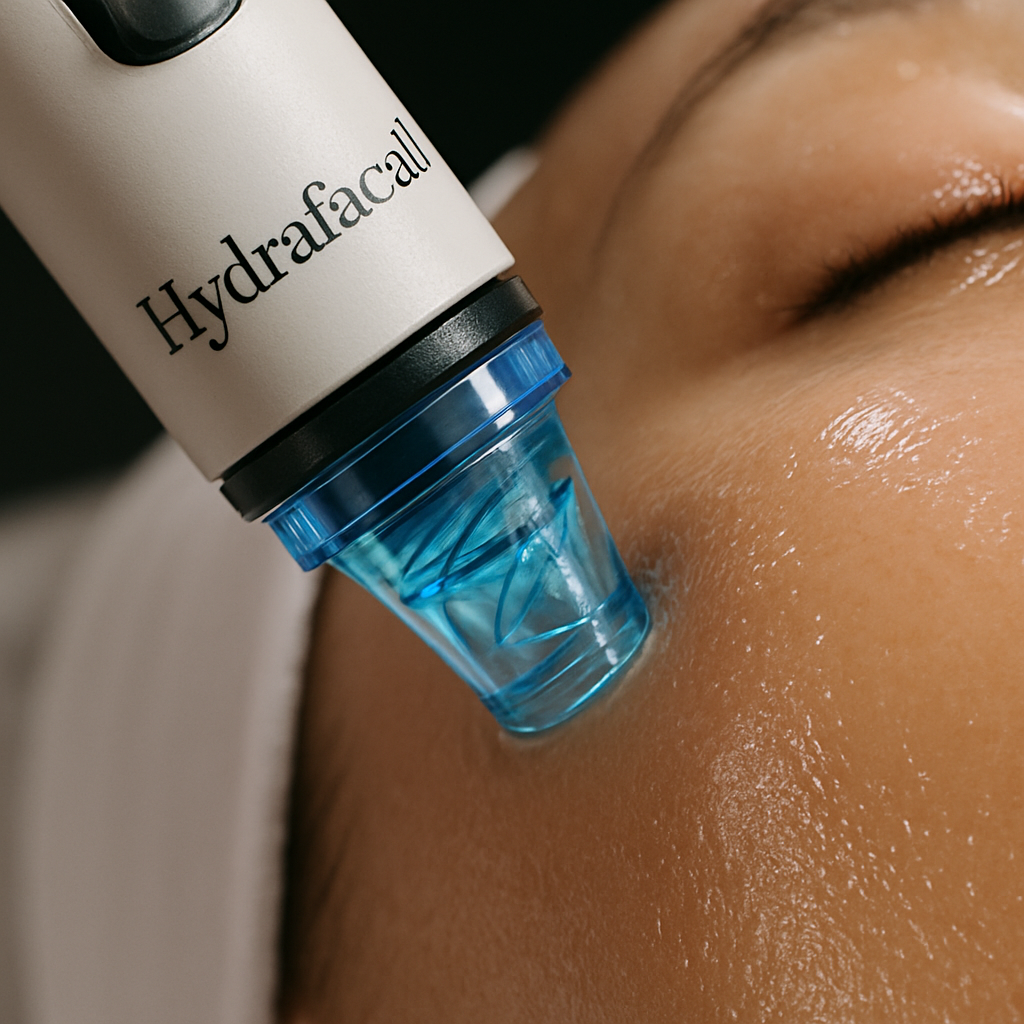
What Is Microdermabrasion? How It Works
When you compare hydrafacial vs microdermabrasion, the first thing to get clear on is what microdermabrasion actually does to your skin.
In a nutshell, it’s a physical exfoliation. A handheld device either sprays tiny crystal particles or uses a smooth diamond tip to gently sand away the outermost layer of dead skin cells.
Think of it like a mini‑sandblaster for your face – but the pressure is so low you feel a light “scratch‑and‑suck” sensation, not pain.
So, how does the machine know how much to take off? The device creates a vacuum that lifts the loosened skin debris away, leaving a fresh, smoother surface behind.
There are two main flavors: crystal microdermabrasion, which relies on fine aluminum‑oxide or sodium‑chloride crystals, and diamond microdermabrasion, which uses a slick, reusable diamond‑coated wand.
If you’re curious about the technical side, differences between crystal and diamond microdermabrasion are explained in detail on a specialist’s blog.
During a typical session, the practitioner first cleanses your skin, then glides the device across the treatment area for about 20‑30 minutes.
Because the procedure only touches the epidermis – the top skin layer – you won’t need anesthesia. Most people describe the feeling as a gentle buzzing or a soft “whoosh.”
What happens after the session? Your skin may look slightly pink, a bit like a mild sunburn, and you might feel a tiny tingle for up to 24 hours.
That temporary redness is actually a good sign – it means the top layer has been successfully lifted, prompting new cells to rise to the surface.
Now, what can you realistically expect? After the first treatment you’ll notice softer, smoother skin. Over a series of 3‑4 sessions, fine lines, age spots, and mild scarring can become noticeably lighter.
According to Cleveland Clinic explains microdermabrasion, the results build up over time, so consistency is key.
Because it’s a surface‑level exfoliation, microdermabrasion won’t stop the natural aging process, but it does give your skin a refreshed canvas for serums and moisturizers to work better.
Who is the ideal candidate? Generally, anyone with normal to oily skin who wants a quick glow‑up without downtime. If you have very sensitive skin, rosacea, or active acne, you might want to discuss alternatives first.
What about risks? The procedure is considered safe, but you could experience temporary swelling, a few pinpoint bruises, or mild irritation if you skip the post‑care soothing cream.
Practical tip: ask your practitioner to match the post‑treatment serum to your skin goal – hyaluronic acid for dry skin, peptides for firmness, or antioxidants for brightening.
Because the device only removes the superficial layer, you can typically resume makeup, light exercise, and even a coffee date within an hour.
And if you’re wondering how often to repeat the treatment, most clinics recommend a monthly schedule for the first few months, then maintenance every 6‑8 weeks.
Remember, the magic isn’t just in the sand‑like particles; it’s in the vacuum that lifts the debris away, leaving room for fresh cells to surface.
So, does this mean you should drop microdermabrasion altogether in the hydrafacial vs microdermabrasion debate? Not necessarily. It’s a solid option if you enjoy a hands‑on, slightly more abrasive exfoliation and have resilient skin.
Bottom line: understanding how microdermabrasion works helps you decide whether it fits your skin goals alongside—or instead of—a Hydrafacial.
Key Differences: Hydrafacial vs Microdermabrasion
How they work – the basics
When you hear “hydrafacial vs microdermabrasion,” the first thing to notice is the way each device meets your skin. A Hydrafacial uses a vacuum‑powered tip that simultaneously cleans, exfoliates and infuses serums, while microdermabrasion relies on a crystal‑tipped wand that sands away the top layer of dead cells.
In other words, Hydrafacial is like a gentle spa‑day for your pores, and microdermabrasion feels more like a sandpaper manicure for your face. That difference explains why the Hydrafacial is often described as “non‑invasive” and why microdermabrasion can feel a tad rougher.
What you actually feel during and after
Imagine sitting for a Hydrafacial: you’ll feel a light suction, a cool serum glide, and maybe a faint tingling as the antioxidants soak in. Most people walk out with a rosy glow and no redness. By contrast, microdermabrasion can leave a mild pink flush and, for sensitive skins, a few pinpoint bruises.
So, does one hurt more than the other? Not really, but the post‑treatment vibe is definitely smoother with Hydrafacial – especially if you have dry or sensitive skin.
Customization and skin types
One of the biggest wins for Hydrafacial is the ability to swap serums on the fly. Want hyaluronic acid for extra moisture? You got it. Need a brightening antioxidant? No problem. Microdermabrasion, on the other hand, is a one‑size‑fits‑all sanding process – you can adjust the grit, but you can’t inject a custom cocktail.
That’s why clinics like Exploring Hydrafacial Benefits often recommend it for anyone from teens with occasional breakouts to seniors chasing that youthful dewy look.
Results timeline
Hydrafacial delivers instant radiance – you can see the glow right after the 30‑minute session. However, the full benefits (like collagen boost) surface after a series of treatments.
Microdermabrasion gives a quick texture polish, but you’ll usually need multiple sessions to smooth deeper lines. Think of it as a “fast‑track” to smoother skin, but the glow isn’t as immediate.
Cost and commitment
Generally, Hydrafacial runs a bit higher per session because of the technology and serums involved. Microdermabrasion can be more budget‑friendly, especially if you do it in‑house. Both recommend regular maintenance – Hydrafacial every 4‑6 weeks, microdermabrasion every 2‑4 weeks depending on skin tolerance.
And if you’re budgeting, remember that a series of six Hydrafacial sessions has been shown to cut acne severity by more than half in clinical studies (see research). That kind of efficacy can offset the price over time.
When to choose which
If you’re dealing with rosacea, eczema, or just hate any post‑treatment redness, Hydrafacial is the safe bet. If you love the idea of a gritty, hands‑on exfoliation and have resilient skin, microdermabrasion can be satisfying.
One tip: ask your practitioner to match the post‑care serum to your goal – a hyaluronic boost for dry skin or a peptide mix for firmness.
| Feature | Hydrafacial | Microdermabrasion | Notes |
|---|---|---|---|
| Exfoliation method | Vacuum + liquid exfoliant | Crystal‑tipped sanding | Hydrafacial is gentler, microdermabrasion is more abrasive. |
| Serum infusion | Customizable serums (HA, antioxidants, acne‑fighting) | None – pure mechanical removal | Allows targeted treatment during the same session. |
| Downtime | None to minimal; immediate glow | Usually mild redness; may need a day to calm | Important for busy schedules. |
| Best skin type | All types, especially sensitive or dehydrated | Normal to oily, resilient skin | Consider your tolerance to friction. |
So, which one feels like your skin’s new BFF? It really comes down to how you value gentleness versus a bit of grit. If you’re still on the fence, think about your biggest skin concern – is it hydration, acne, or texture? Match that to the treatment that addresses it directly.
And here’s a quick action step: schedule a free skin analysis at Simcoe Cosmetic Clinic, ask for a side‑by‑side comparison, and let the specialist recommend a personalized plan. You’ll walk away with a clear roadmap, whether that’s a monthly Hydrafacial regimen or a micro‑derm schedule that fits your lifestyle.
For a broader perspective on how professionals stay resilient while offering these services, check out this guide on effective nurse burnout interventions. It’s a reminder that great skin care also depends on happy, well‑supported practitioners.
Benefits & Drawbacks of Hydrafacial
Ever walked out of a spa feeling like your skin just got a fresh start? That’s the kind of instant glow a HydraFacial promises, and most clients at Simcoe Cosmetic Clinic swear by it.
What you’ll love about a HydraFacial
First off, there’s almost zero downtime. You can pop in during a lunch break, get the vortex‑fusion cleanse, and head straight back to meetings—no red, flaky aftermath.
The treatment blends cleansing, exfoliation, extraction, and serum infusion in one seamless flow. Because the serums are packed with hyaluronic acid, peptides and antioxidants, you walk away with plump, hydrated skin that feels like it’s been drinking water for days.
And it’s truly customizable. Whether you’re battling fine lines, stubborn acne, or rosacea, the medical esthetician can swap in a brightening booster or a calming serum on the spot. That flexibility is a big win over the one‑size‑fits‑all approach of microdermabrasion.
Clients with sensitive skin often appreciate the gentle suction and the fact that there’s no gritty crystal spray. As Mara’s Med Spa notes, the vortex technology feels more like a soothing massage than a harsh abrasion.
Potential downsides to keep in mind
While the experience is generally painless, a handful of people with ultra‑sensitive skin notice a brief flush of redness that fades within an hour. It’s nothing dramatic, but it’s worth mentioning if you’re prone to rosacea flare‑ups.
Another caution: the treatment uses mild acids—salicylic and glycolic—to loosen dead cells. If you’re pregnant, nursing, or have an active breakout, you might want to pause and discuss alternatives with your provider.
And, like any skincare procedure, results are cumulative. One session gives you a nice glow, but the real transformation comes from regular monthly visits. Skipping too many appointments can make the benefits feel short‑lived.
How it stacks up against microdermabrasion
Microdermabrasion relies on tiny crystals to physically sand away the outer skin layer. That can leave a bit more redness and a longer recovery window—perfect if you’re after deeper resurfacing, but not ideal for a busy schedule.
In a side‑by‑side comparison, HydraFacial wins on comfort and hydration, while microdermabrasion may edge out on aggressive texture improvement for very thick, oily skin.
So, which one feels like the right fit for you? Think about your skin’s current mood: does it crave a gentle boost of moisture, or does it need a more abrasive reset?
Quick tip: pairing with lifestyle
After a HydraFacial, protect that fresh skin with SPF 40 or higher—your dermatologist will tell you the same. And if you’re over 60, consider that healthy skin also pairs well with solid health planning; check out this guide on life insurance options for seniors while you schedule your next treatment.
Ready to test the glow for yourself? Book a complimentary skin analysis at Simcoe Cosmetic Clinic, ask the esthetician to walk you through the serum cocktail, and decide if a monthly HydraFacial routine fits your lifestyle.
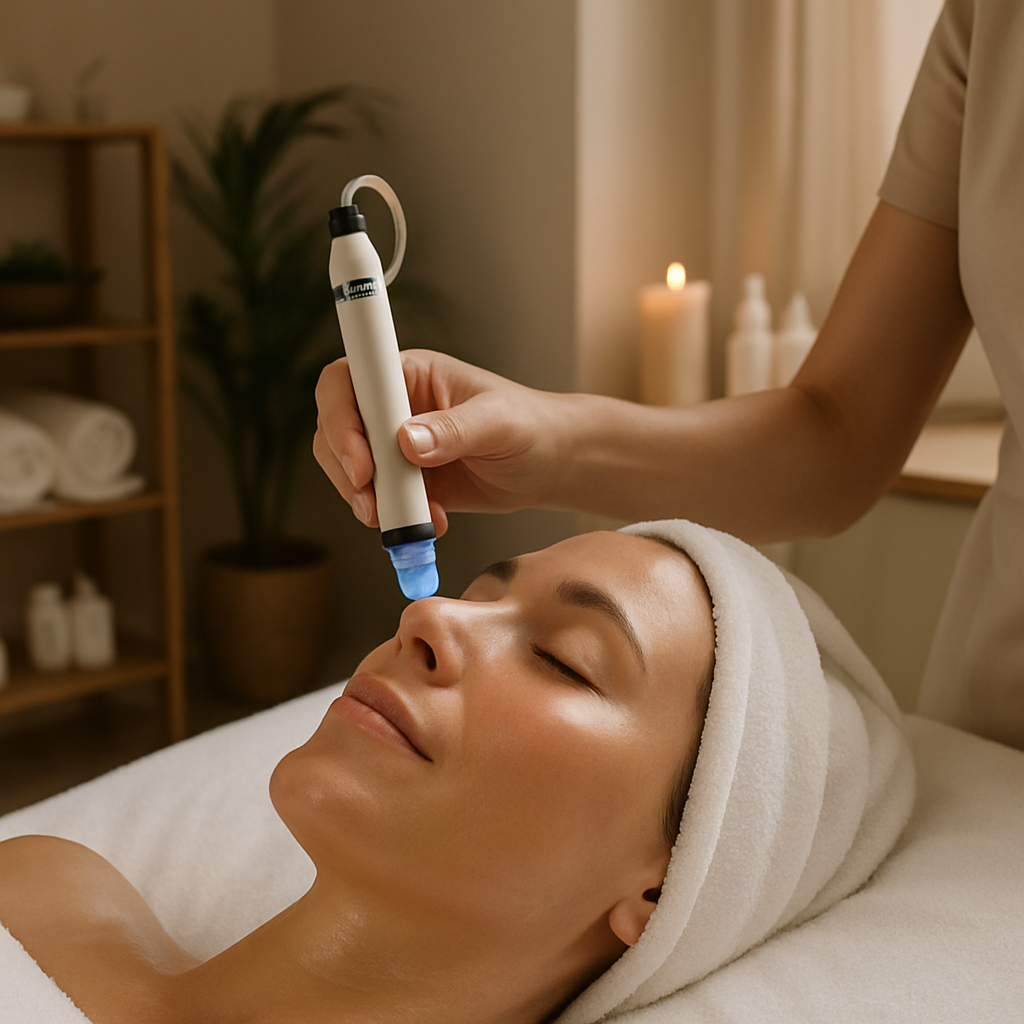
If you’re juggling a hectic schedule, consider pairing the HydraFacial with a quick at‑home routine—like a gentle vitamin C serum and nightly moisturizer—to extend the glow between visits. Consistency is the secret sauce, and your skin will thank you truly.
Benefits & Drawbacks of Microdermabrasion
Okay, let’s talk about what really happens when you sit in that chair and the microderm machine starts humming.
First, the good stuff.
What you’ll love about microdermabrasion
It’s basically a gentle sandpaper for your face – only way softer. The hand‑held device lifts away the dead‑cell “plaque” on the surface, and the built‑in vacuum sweeps it away. The result? Softer, smoother skin that feels fresh, almost like you’ve just brushed away a layer of dullness.
Because it only touches the outermost layer (the stratum corneum), the risk is low. MedicalNet explains the low‑risk nature of microdermabrasion, noting minimal bruising, redness, or downtime.
People notice a glow after just one session – a mild pink flush that fades within an hour. That little “post‑sunburn” hue actually means circulation is kicking in, helping collagen production start its slow dance.
Another perk: microderm can improve early signs of photoaging, fine lines, and those pesky age spots without the drama of lasers or chemical peels. It’s especially kind to busy folks who can pop in during a lunch break and head straight back to work.
And if you’ve got acne‑related concerns, the vacuum action helps unclog pores, making it a useful sidekick to topical treatments.
Because the treatment is superficial, you can apply makeup right after, and most moisturizers sink in even better – the skin is basically primed for product absorption.
Now, how often? Most pros suggest a series of four to six sessions spaced two to four weeks apart, then a monthly maintenance plan. Think of it like brushing your teeth: you need to do it regularly to keep the benefits.
So, does it sound like the perfect “quick fix” for you? Maybe.
Potential downsides to keep in mind
Here’s the flip side. Since microderm only scratches the surface, the changes are modest. If you’re hoping for dramatic resurfacing, you might leave feeling a bit underwhelmed.
Because the procedure is gentle, you’ll likely need multiple visits to see a noticeable shift in texture or tone. Patience is part of the package.
Side effects are usually mild: a few hours of redness, a tiny bit of tightness, or occasional bruising if you’re on blood thinners. Over‑aggressive passes can cause a temporary increase in pigment (post‑inflammatory hyperpigmentation), especially on deeper‑tone skin.
People on isotretinoin (Accutane) or recent heavy retinoid use should pause – the skin is more fragile and could scar. Same goes for anyone with active cold sores around the lips; a breakout can be triggered.
And remember, sunscreen becomes non‑negotiable after treatment. Your skin will be more photosensitive, so a broad‑spectrum SPF 40 or higher is essential.
Cost-wise, each session runs about $100‑$250 at a medspa like Simcoe Cosmetic Clinic. It’s cheaper than laser resurfacing, but the cumulative price of a full series adds up.
One more thing: microderm isn’t covered by health insurance because it’s cosmetic. However, if you’re over 60 and juggling other financial priorities, you might appreciate the reminder to review your broader financial health. For example, checking out the best life insurance for seniors over 60 can help you budget for regular skin‑care maintenance.
Bottom line? The benefits – smoother texture, brighter tone, minimal downtime – often outweigh the modest drawbacks for many people.
But ask yourself: are you ready to commit to a series of visits and diligent after‑care?
If you’re nodding, here’s a quick cheat sheet you can print out:
- Start with 4‑6 sessions, 2‑4 weeks apart.
- Use a gentle cleanser and a hydrating serum daily.
- Apply SPF 40+ every morning, reapply throughout the day.
- Watch for any lingering redness or bruising; if it lasts more than 48 hours, call your esthetician.
- Consider a monthly maintenance session after the initial series.
Feel free to pop a question in the comments or schedule a complimentary skin analysis at Simcoe Cosmetic Clinic. We’ll walk you through the process, answer any concerns, and help you decide if microdermabrasion fits your skin goals.
Cost, Recovery Time, and Who Should Choose Which Treatment
Alright, let’s get real about the dollars and downtime you’ll face when you’re stuck between hydrafacial vs microdermabrasion.
Price snapshot
At Simcoe Cosmetic Clinic a single HydraFacial session usually lands in the $150-$250 range, while a microdermabrasion treatment is more modest, often $80-$120.
Those numbers aren’t set in stone – they shift with the number of sessions, any add‑on serums, and the expertise of the esthetician. The Artistry Clinic guide notes that in the UK HydraFacial can cost £100-£200, and microdermabrasion £60-£100, which lines up nicely with what we see here.
Because both treatments are cosmetic, your health insurance won’t foot the bill. If you’re over 60 and juggling other priorities, you might want to glance at the Best Life Insurance for Seniors Over 60 article for budgeting tips.
Recovery reality
HydraFacial is practically a “no‑pain, no‑pause” experience. The device uses a gentle vacuum and serums, so most people walk out with a glow and can apply makeup within 30 minutes.
Microdermabrasion is a bit more hands‑on. The crystal spray can leave a faint pinkness that usually fades in 24‑48 hours. If you have sensitive skin, you might notice a little extra redness, but it’s still considered low‑downtime.
One trick we love: keep your skin hydrated and avoid harsh exfoliants for the first 48 hours. That way you’ll soothe any lingering redness and lock in the fresh new layer.
Who should pick which?
If you crave instant radiance, love a little serum infusion, and don’t mind paying a bit more, HydraFacial is your go‑to. It’s especially kind to mature skin that needs hydration as well as exfoliation.
On the flip side, if you’re on a tighter budget, have a bit more patience for a series of visits, and want to target fine lines or mild acne scarring, microdermabrasion checks those boxes.
Here’s a quick decision matrix:
- Budget‑conscious: microdermabrasion.
- Immediate glow: HydraFacial.
- Sensitive or rosacea‑prone skin: HydraFacial (gentler).
- Goal: gradual texture improvement over several sessions: microdermabrasion.
Putting it together
Think about your schedule. A HydraFacial fits into a lunch break; microdermabrasion might need a day off if you’re planning a beach outing.
And ask yourself: am I comfortable paying a premium for convenience, or do I prefer spreading the cost over a few months?
Whatever you decide, the key is consistency. Both treatments shine when you pair them with daily sunscreen, a gentle cleanser, and regular moisturising.
Ready to test the waters? Book a complimentary skin analysis at Simcoe Cosmetic Clinic, and we’ll map out a plan that respects your wallet, your timeline, and your skin goals.
Long‑term cost and maintenance
Most clients find that the initial series sets the tone. For HydraFacial, a 4‑session package often drops the per‑visit price by 10‑15%, making it more budget‑friendly if you commit up front. Microdermabrasion packages work similarly, but because each session is cheaper, you might end up spending a comparable total after six to eight visits.
Maintenance matters, too. After you’ve built a solid foundation, a quarterly HydraFacial can keep that glow alive with just a few hundred dollars a year. Microdermabrasion lovers usually schedule a touch‑up every 4‑6 weeks, which adds up modestly but stays well under a thousand dollars annually.
Bottom line: map your budget to your skin goals, and remember that consistent care often beats an occasional expensive splurge.
Conclusion
So, you’ve walked through the pros and cons of HydraFacial vs microdermabrasion, and you probably feel a mix of excitement and a little uncertainty.
Here’s the bottom line: if you crave instant glow with minimal downtime, HydraFacial usually wins; if you prefer a budget‑friendly routine you can do more often, microdermabrasion often fits better.
But remember, the best results come from consistency—not just a one‑off session.
Ask yourself: how much time can you realistically set aside each month, and what budget feels comfortable for you?
If you’re leaning toward HydraFacial, consider booking a complimentary skin analysis at Simcoe Cosmetic Clinic—there you’ll get a personalized plan that aligns with your goals and wallet.
If microdermabrasion feels more your speed, start with a small package and track how your skin responds before scaling up.
Either way, pair your chosen treatment with daily sunscreen, gentle cleansing, and regular moisturising—that’s the real secret to long‑term glow.
Need a little extra peace of mind while you plan your skincare budget? Check out this helpful guide on Best Life Insurance for Seniors, it offers solid budgeting tips you can adapt to any self‑care plan.
So, what’s your next move? Book that analysis, try a session, and watch your skin transform—because you deserve to feel confident at any age.
FAQ
What’s the main difference between a HydraFacial and microdermabrasion?
Think of a HydraFacial as a high‑tech, multi‑step spa that cleanses, extracts, and infuses serums in one smooth session. Microdermabrasion, on the other hand, is more of a mechanical exfoliation that sands away the outermost skin layer with tiny crystals. In short, HydraFacial gives you instant glow and hydration, while microdermabrasion focuses on texture and resurfacing.
Which treatment is gentler for sensitive or acne‑prone skin?
If you’ve ever felt a sting from a harsh scrub, you’ll appreciate that HydraFacial uses a vacuum‑like suction and soothing serums, which most people with redness or breakouts find tolerable. Microdermabrasion can be a bit rougher because it physically abrades the skin, so it might trigger irritation on very sensitive types. That said, a skilled therapist at Simcoe Cosmetic Clinic can dial down the intensity for either option.
How often should I schedule HydraFacial vs microdermabrasion?
Most folks love the quick‑fix feeling of a HydraFacial every 4–6 weeks – enough to keep the radiance without overwhelming the skin. Microdermabrasion usually needs a bit more recovery, so a 6‑week interval works well, especially if you’re stacking it with at‑home care. If budgeting is on your mind, check out these budgeting tips to see how you can fit regular skin‑care into your monthly plan.
Can I combine both treatments for even better results?
Absolutely – many clients alternate: HydraFacial for a hydration boost, then microdermabrasion a few weeks later for deeper resurfacing. The key is to give your skin a breather between sessions and always follow the post‑care routine your therapist recommends. It’s like mixing a nutritious smoothie with a solid workout – you get the best of both worlds.
What should I expect in terms of downtime and after‑care?
HydraFacial is practically no‑downtime; you might notice a light pink flush that fades within an hour. Microdermabrasion can leave a subtle redness or tiny “sand‑grain” texture for a day or two. In both cases, a gentle cleanser, a good moisturizer, and daily SPF are non‑negotiable. And remember, consistency beats intensity – regular, modest sessions will outshine occasional aggressive treatments.

